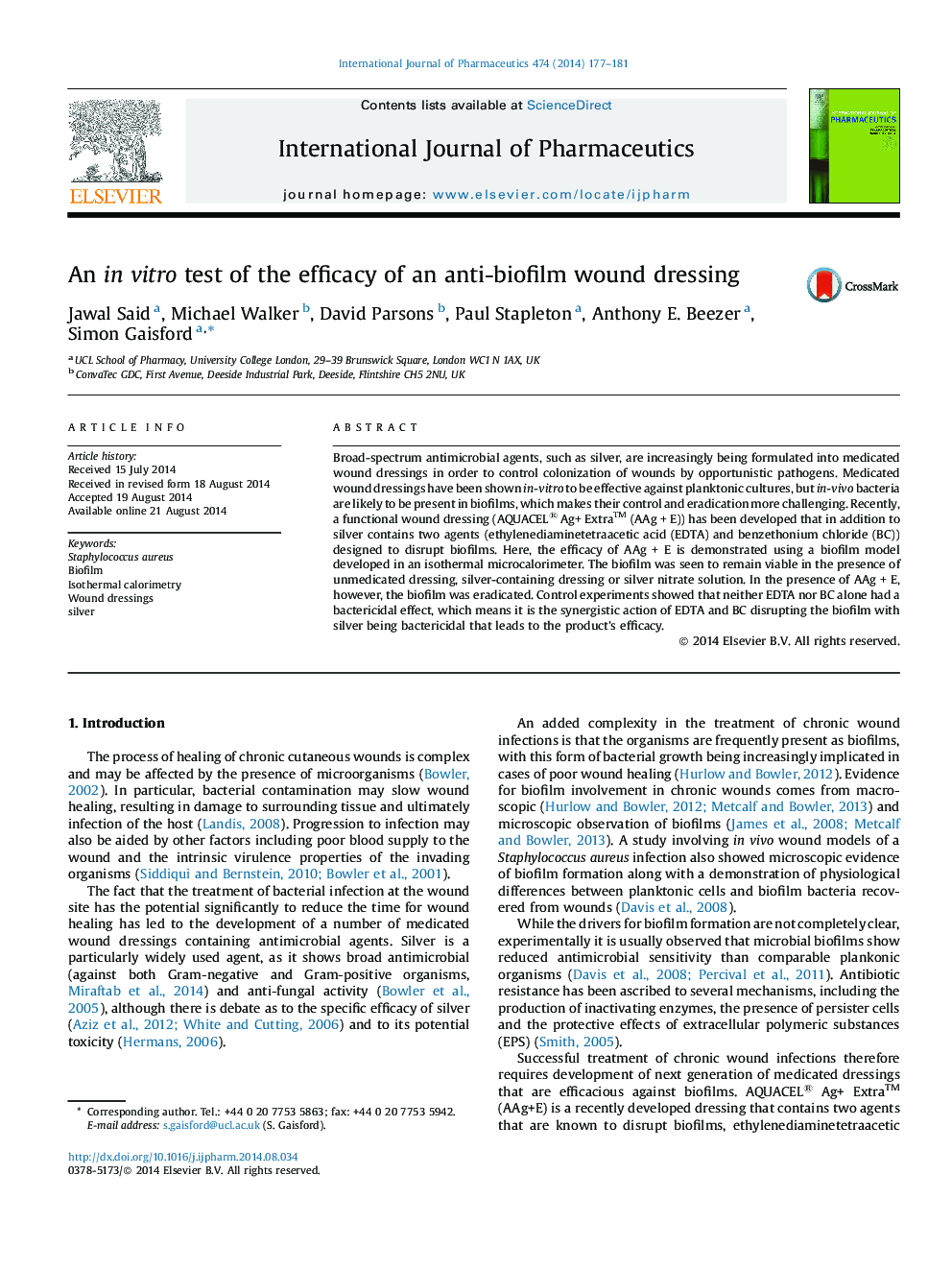| Article ID | Journal | Published Year | Pages | File Type |
|---|---|---|---|---|
| 2501794 | International Journal of Pharmaceutics | 2014 | 5 Pages |
Broad-spectrum antimicrobial agents, such as silver, are increasingly being formulated into medicated wound dressings in order to control colonization of wounds by opportunistic pathogens. Medicated wound dressings have been shown in-vitro to be effective against planktonic cultures, but in-vivo bacteria are likely to be present in biofilms, which makes their control and eradication more challenging. Recently, a functional wound dressing (AQUACEL® Ag+ Extra™ (AAg + E)) has been developed that in addition to silver contains two agents (ethylenediaminetetraacetic acid (EDTA) and benzethonium chloride (BC)) designed to disrupt biofilms. Here, the efficacy of AAg + E is demonstrated using a biofilm model developed in an isothermal microcalorimeter. The biofilm was seen to remain viable in the presence of unmedicated dressing, silver-containing dressing or silver nitrate solution. In the presence of AAg + E, however, the biofilm was eradicated. Control experiments showed that neither EDTA nor BC alone had a bactericidal effect, which means it is the synergistic action of EDTA and BC disrupting the biofilm with silver being bactericidal that leads to the product’s efficacy.
Graphical abstractFigure optionsDownload full-size imageDownload high-quality image (75 K)Download as PowerPoint slide
